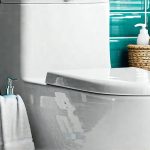Daytime urges to urinate frequently can be incredibly disruptive, impacting focus, productivity, and overall quality of life. It’s easy to assume it’s simply “part of getting older” or a minor inconvenience, but persistent frequent urination warrants investigation. Often, what we eat and drink plays a surprisingly significant role in how often we need to visit the bathroom. This isn’t always about excessive fluid intake; rather, certain foods and beverages can directly stimulate the bladder, irritate the urinary tract, or affect kidney function, leading to increased urgency. Identifying these triggers is the first step towards regaining control and finding relief from this frustrating symptom.
This article will delve into understanding how dietary choices influence daytime urges, offering practical strategies for identifying your personal trigger foods, and providing a framework for making informed adjustments to minimize disruption. It’s important to remember that everyone reacts differently; what causes urgency in one person might not affect another. This is about becoming an active participant in understanding your body and tailoring your diet accordingly, with the guidance of healthcare professionals as needed. We’ll explore both common culprits and less obvious possibilities, empowering you to take charge of your bladder health.
Common Dietary Culprits & Bladder Irritants
Many foods and drinks are known bladder irritants, meaning they can directly stimulate the bladder muscles or cause inflammation that increases urgency. Caffeine is perhaps the most well-known example. Found in coffee, tea, soda, and even chocolate, caffeine acts as a diuretic, increasing urine production. It also has a direct stimulating effect on the bladder, making it contract more frequently. Alcohol operates similarly; it’s both a diuretic and a potential bladder irritant, often exacerbating symptoms when consumed in larger quantities. Beyond these common beverages, acidic foods are frequent triggers for many individuals. Citrus fruits (oranges, lemons, grapefruit), tomatoes and tomato-based products, and vinegar can all irritate the bladder lining, leading to increased urgency and discomfort. If you’re looking for ways to identify your personal sensitivities, consider exploring how to pinpoint foods that trigger urinary discomfort.
Spicy foods, while enjoyable for some, contain compounds like capsaicin that can also cause bladder irritation. The effect isn’t universal – spice tolerance varies greatly – but if you notice a connection between spicy meals and increased urges, it’s worth considering reducing your intake. Artificial sweeteners are another often-overlooked contributor to daytime urgency. While marketed as healthier alternatives to sugar, some artificial sweeteners have been linked to bladder irritation in sensitive individuals. Similarly, carbonated beverages can mechanically irritate the bladder due to their fizz, leading to a feeling of fullness and increased frequency. It’s crucial to remember that this isn’t about eliminating entire food groups; it’s about identifying personal sensitivities and making adjustments where necessary.
Finally, even seemingly healthy foods like dairy can contribute to urgency in some people. Lactose intolerance or sensitivity can cause inflammation and digestive upset, which may indirectly affect bladder function. Understanding these common culprits is a good starting point for your investigation, but the next step involves personalized identification of your specific triggers.
The Elimination Diet Approach
An elimination diet is a highly effective method for identifying food sensitivities and pinpointing dietary triggers. It’s a process of temporarily removing potential irritants from your diet and then systematically reintroducing them to observe any resulting symptoms. This isn’t about long-term restriction; it’s about gaining clarity on what affects your body.
- Phase 1: Elimination (2-3 weeks) – During this phase, you completely remove common bladder irritants from your diet. This includes caffeine, alcohol, citrus fruits, tomatoes, spicy foods, artificial sweeteners, carbonated beverages, dairy (if suspected), and potentially even highly processed foods. Focus on a bland diet consisting of easily digestible foods like rice, plain chicken or fish, cooked vegetables (avoiding acidic ones), and water. Keeping a detailed food diary during this phase is essential. Record everything you eat and drink, as well as any symptoms you experience, including the timing and severity of urges.
- Phase 2: Reintroduction (1 at a time) – After the elimination period, begin reintroducing foods one at a time, every 3-4 days. Choose one food to add back into your diet and monitor for any changes in your symptoms. If you notice increased urgency or discomfort after reintroducing a particular food, remove it from your diet again and consider it a potential trigger.
- Phase 3: Observation & Personalization – Continue this process of reintroduction and observation until you’ve tested all the eliminated foods. This will help you build a personalized list of trigger foods to avoid or limit in your diet. It’s vital to consult with a doctor or registered dietitian during this process, especially if you have any underlying health conditions. To further refine this approach, consider tracking bladder-stressing foods specifically.
The key to success with an elimination diet is consistency and meticulous record-keeping. Don’t skip the diary; it provides invaluable information for identifying patterns and triggers. Remember that reactions can sometimes be delayed, so pay attention to symptoms even several hours after consuming a particular food.
Hydration & Fluid Timing Strategies
While some foods increase urgency, adequate hydration is still vital for overall health and bladder function. Paradoxically, restricting fluid intake can actually concentrate urine, making it more irritating to the bladder. The goal isn’t to drink less, but to optimize when and how you drink throughout the day. Avoid large volumes of fluids at once, as this can overwhelm your bladder and lead to immediate urgency. Instead, sip water consistently throughout the day, spreading your intake evenly.
Consider timing your fluid consumption strategically. Reduce fluid intake a few hours before bedtime to minimize nighttime awakenings. Also, avoid drinking large amounts of fluids right before leaving the house or engaging in activities where access to a restroom is limited. The type of liquid matters too. Plain water is always best. Avoid sugary drinks and those containing caffeine or artificial sweeteners as much as possible. Herbal teas can be soothing for some, but check for ingredients known to irritate the bladder.
Understanding Food Additives & Hidden Irritants
Beyond obvious culprits like acidic foods and caffeine, many food additives and hidden irritants can contribute to daytime urges. Preservatives, coloring agents, and flavor enhancers are often found in processed foods and may cause sensitivity in some individuals. Monosodium glutamate (MSG) is a common flavor enhancer that has been linked to various symptoms, including bladder irritation. Artificial colors and preservatives like benzoates have also been reported to exacerbate urgency in sensitive individuals.
Reading food labels carefully is essential for identifying these hidden irritants. Look beyond the main ingredients list and examine the “other ingredients” section closely. Be aware that some additives may be listed under different names, so do your research if you’re unsure. Another often-overlooked source of hidden irritants is medications. Some medications can have diuretic effects or directly affect bladder function, contributing to increased urgency. If you’re taking any medications, discuss potential side effects with your doctor and pharmacist. Finally, remember that even seemingly innocuous foods like soups and sauces can contain hidden triggers, such as tomato paste or excessive salt. Being a diligent label reader is crucial for minimizing exposure to these often-unidentified irritants. To support kidney health alongside dietary adjustments, you might also consider foods that support kidney filter function.
It’s important to reiterate: this information is intended for general knowledge and informational purposes only, and does not constitute medical advice. Always consult with a qualified healthcare professional for any health concerns or before making any decisions related to your health or treatment. If you are experiencing chronic discomfort, it could be beneficial to learn about foods to limit when dealing with chronic pelvic discomfort.





















